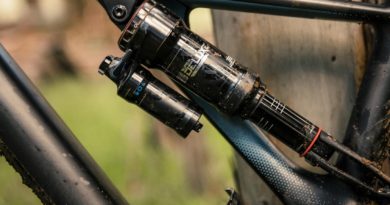Graphene based disc rotors in prototype stage, says Dassi
Dassi Bikes is to launch a graphene disc brake rotor into the market as of Q1 2020, the founder Stuart Abbott has told CI.N.
Dubbed the wonder material and invested in significantly the world over by those chasing innovations spanning water purification to simply making things a bit lighter and stronger, Graphene has a long list of properties that lend immense scope to cycling products.
“The heat dissipation in one attribute that makes a disc rotor a sensible product to create and the Graphene added to the composite certainly makes it stronger and lighter. Our first attempt was only 16.9 grams, but we think the full production model will be between 28 grams and 32 grams, depending upon the surface braking treatments we need to apply,” Abbott told CI.N.
As with the rest of Dassi’s goods, the component will be UK made and tested. As it stands the prototype is performing as expected with organic pads and 140/160mm iterations of the prototype.
“The performance that we have see is as good as traditional discs but we still have some testing to perform,” says Abbott.
Dassi has form using graphene. In November of last year the firm told CI.N how it foresaw being able to revolutionise cycle sport. In short, the conductivity properties of the material could in theory deliver teams and race commentators data from the rider’s bike that would previously have been unattainable.
At the time Abbott said: “With electrical conductivity, bicycles and smart clothing become highly capable data transmitters. Despite representing just 3% of our prototype by weight, we have been able, at an atomic level, to coat every fibre with graphene. This ultimately means we are able to generate metrics on rider performance beyond that of any powermeter. That data comes in real time too, so you flip on its head the ‘what could have beens’ instantly into real time competitive advantages, much like you’d see in Formula One. This gives an immense new strategic tool kit to riders and race directors, but also to broadcasters trying to illustrate to the viewing fan why strategic decisions are being taken in races.”
Of the disc product Abbott adds: “I’m hoping for a product launch in mid Q1 and will be looking to use the standard distribution model rather than B2C.”



